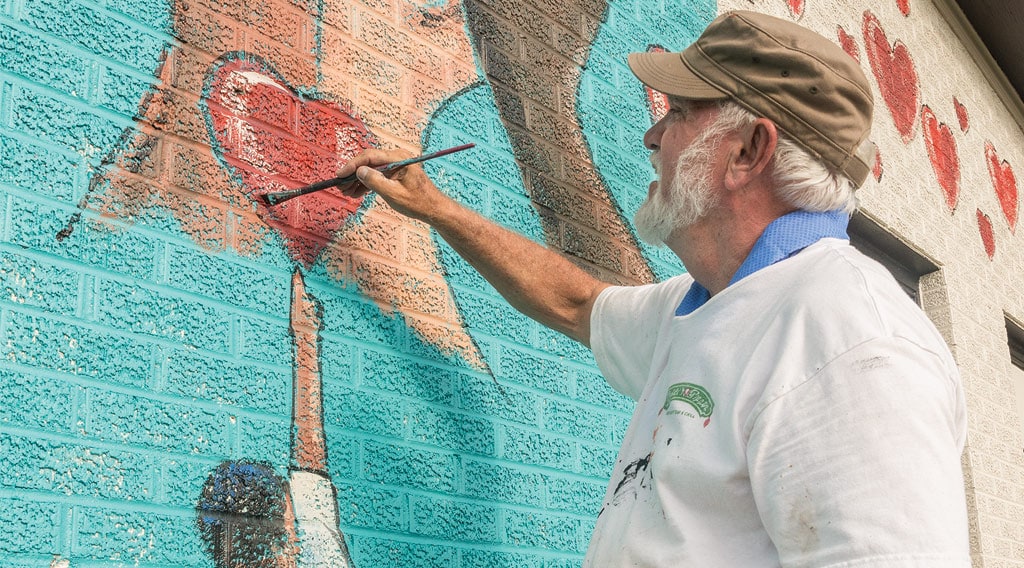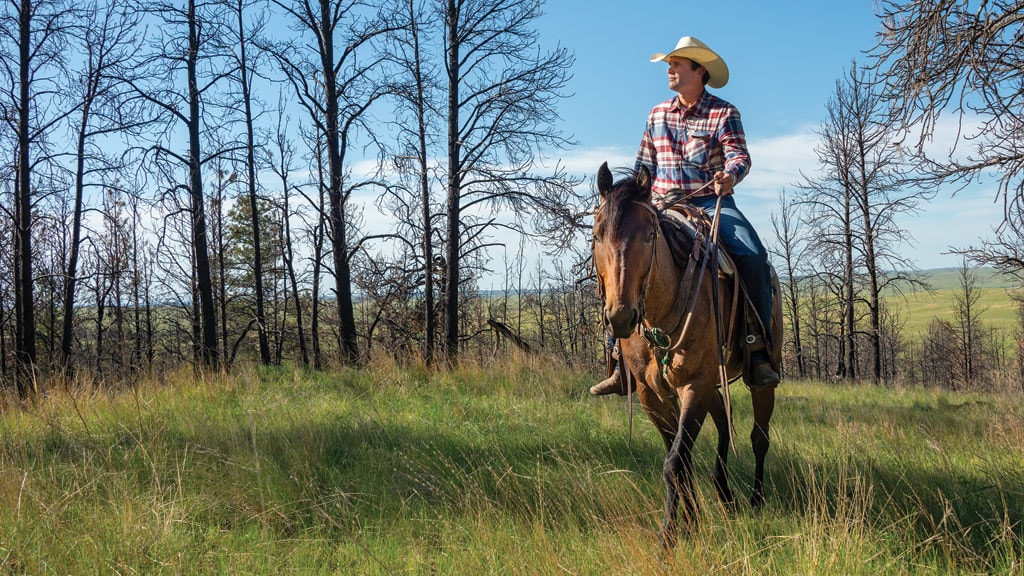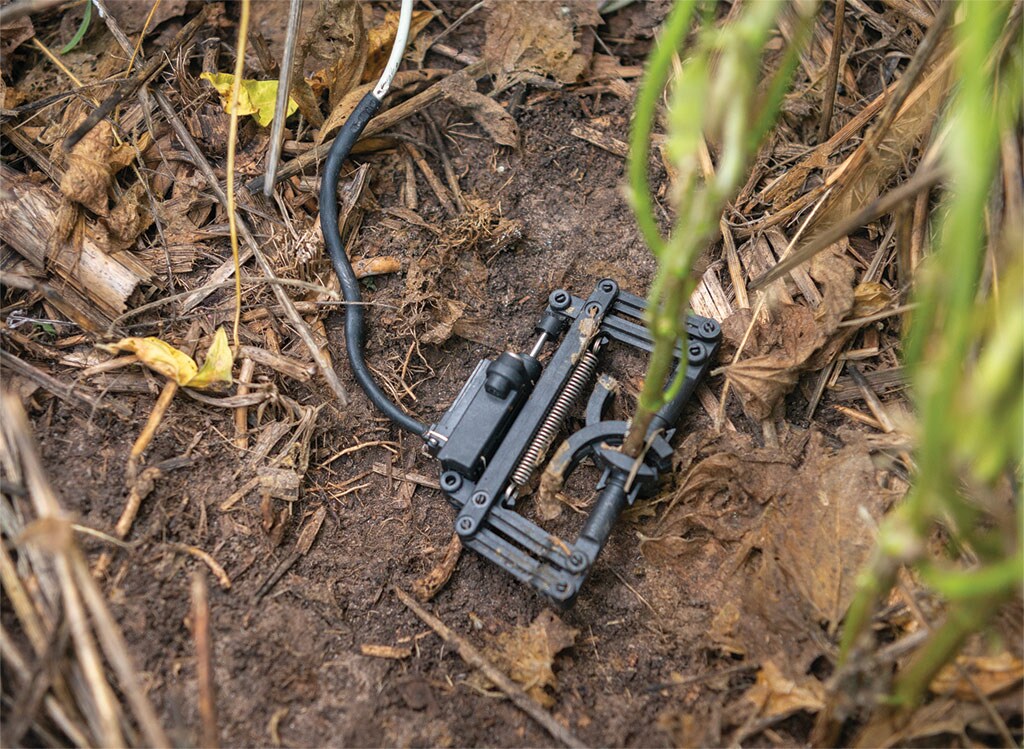
Agriculture, Education December 01, 2020
Give Me A Drink
Plants order up irrigation
After thousands of years of making irrigation decisions based on observation, familiarity with their fields, and no small amount of guesswork, farmers can finally ask their crops when it’s time to water.
A wave of plant sensors that measure water stress, coupled with a new generation of automated irrigation systems linked to soil moisture probes, is revolutionizing irrigated agriculture. In an age when every drop counts—environmentally and economically—and regulated deficit irrigation tactics use precisely timed water stress to boost crop quality, these are toast-worthy tools.
Ask the plant. Ryan Speer of Jacob Farms and Cattle in Sedgwick, Kansas, was intrigued by Phytech’s system, which uses a plastic clamp to measure tiny changes in the diameter of plant stems as their conductive tissue fills or drains. (In trees and vines, farmers install a small plunger that presses against the bark.)
Over the past five years, Speer says, the Phytech system has helped him improve his operation’s irrigation efficiency in corn, soybeans, and cotton. “It was pretty easy to pick up that we were over-watering our corn, and a lot of times we were watering too far into the season, so we were able to reduce three to four applications towards the end of the corn’s life,” he explains.
The system also revealed that corn was stressed for water during pollination because water would evaporate before the pivot came around again. “So we’re making faster passes, which is getting that plant cooled off faster in that high-evaporation timeframe,” Speer says.
Speer compared Phytech’s watering recommendations—which he spends a few minutes checking every morning—with 10% over- and 10% under-irrigating. Following the recommendations in corn yielded 251 bushels per acre; 10% under yielded 239, and 10% over yielded 232. He’s sold.
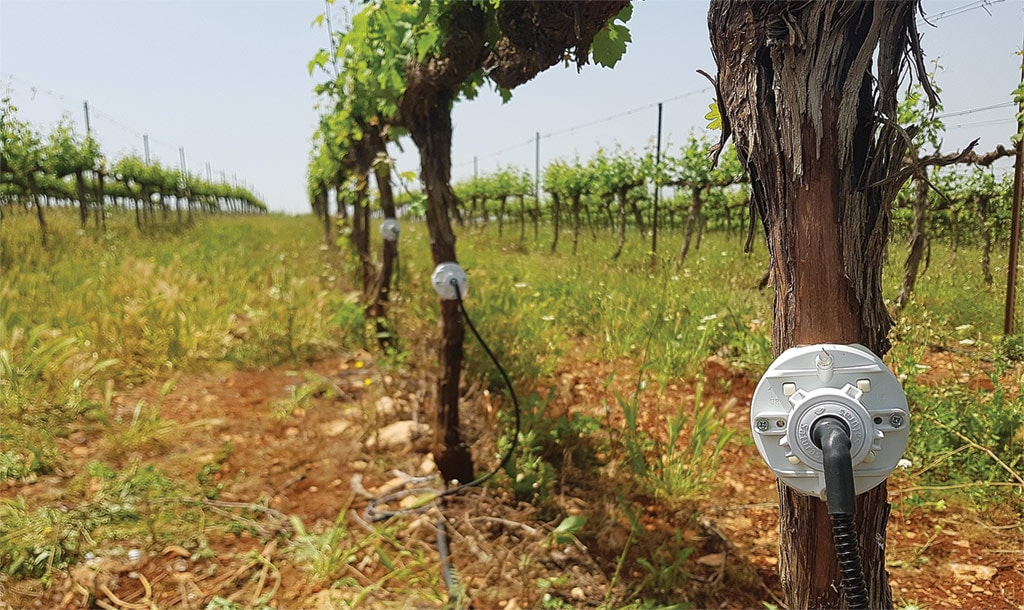
Saturas sensors drilled into these grapevines measure the stem water potential of the plants, which rises as water stress increases.
The inside story. Saturas tracks water needs from inside the plant—its stem water potential sensor is installed in direct contact with the xylem tissue of tree and vine crops. As water flows through the conductive tissue, some enters the sensor through a membrane, increasing the pressure in the sensor chamber. As flow decreases, water exits the sensor and the pressure drops.
It’s a continuous, automated version of the laborious “pressure bomb” system that scientists and farmers have used for decades to measure stem water potential.
Avi Shtain at Saturas’ headquarters in northern Israel says the long history of pressure bomb testing around the world is one of the strengths of the system.
“The database and the know-how of how to irrigate according to stem water potential is out there,” he points out.
Shtain says Saturas has been working on its sensors since 2013, perfecting their installation and tapping into innovations in human medical implants to learn how to prevent plants’ wound response mechanisms from coating the device. After two years of testing in California, the Saturas system is commercially available in the western U.S. and the company hopes to expand its distribution system to other regions soon.
A former Cornell University researcher has developed a similar approach called FloraPulse, and Penn State grad student Amin Afzal generated a lot of excitement with a leaf thickness sensor in 2017 that hasn’t been commercialized.
Buried insights. Mark Greenspan of Advanced Viticulture in California’s Russian River Valley has spent countless hours with porometers—which measure transpiration and stomatal conductance at the leaf surface—and pressure bombs. He’s excited about the potential for automated plant sensors, but keeps a very close eye on soil moisture readings.
That’s especially important when trying to strategically underwater grapevines to boost flavor, he says.
“You can’t stress the vine if it’s got a pool of water sitting underneath it,” Greenspan notes. “Using ET [evapotranspiration] or plant moisture stress doesn’t give you enough information.” Soil probes also track whether irrigation systems are working.
“They want to know when they irrigate that they are really irrigating,” he says. “It’s not like people cheat, but they do estimate. The soil probes give us feedback.”
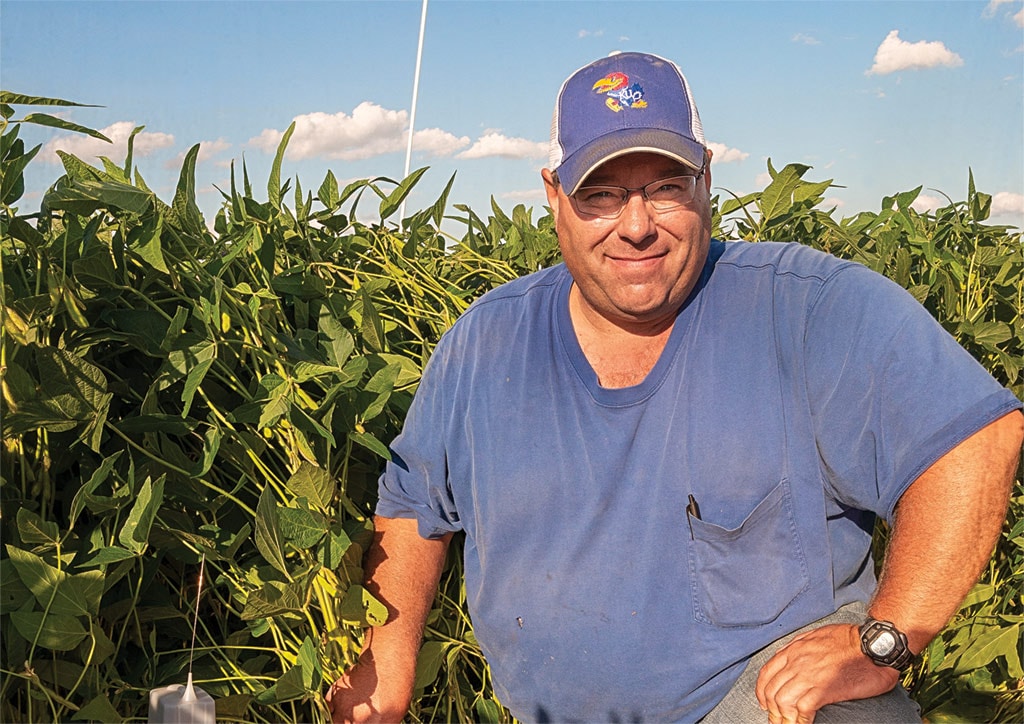
Ryan Speer says Phytech stem diameter sensors have been “super accurate” in Kansas.

